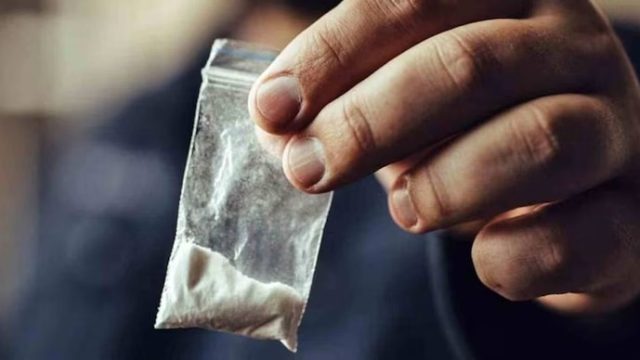Delhi and Gujarat police seized 518 kg of cocaine in a joint operation. Its value is estimated to be Rs.5 thousand crores. Police seized this cocaine in Ankleshwar, Gujarat. The police said that these drugs were seized in a raid at a pharma company in Ankleshwar.
In the last two weeks, investigative agencies in Delhi and Gujarat have seized 1,289 kg of cocaine and 40 kg of hydroponic cannabis, sources told the news agency. Its price is around 13 thousand crores.
Earlier on October 1, 562 kg of cocaine and 40 kg of ganja were seized in Delhi. Its value is estimated at Rs.5,600 crore. This is the largest consignment seized in Delhi.
Seizure of these drugs is not limited to big states like Delhi and Gujarat. In fact, drug consignments are being seized from several states including Madhya Pradesh, Maharashtra, Assam, Jammu and Punjab.
What happens to seized drugs?
Thousands of lakhs of tons of drugs are seized every year. According to the Narcotics Control Bureau (NCB), in 2023 alone, more than 1.32 lakh people were arrested along with drug seizures.
But when such large quantities of drugs are seized, the question arises as to what happens to them. Not only in India, but in almost all countries of the world, whenever drug consignment is seized, a sample is taken. After that it will be sent for investigation. Once everything is done, the process of disposing of the seized drugs begins.
Who makes the decision to dispose of drugs?
There is a proper guideline for this from the revenue department. Each state has one or more Drug Disposal Committees that make decisions on drug disposal. But its powers are also limited.
The Drug Disposal Committee can decide on disposal only up to a specified quantity. If more than the specified quantity of drugs are seized, the decision is taken by a high-level committee to dispose of them. The committee may decide to dispose of 5 kg of heroin, 100 kg of hashish, 1000 kg of ganja and 2 kg of cocaine.
If there is more than the prescribed quantity of drugs, the Drug Disposal Committee will send a recommendation for its disposal to the higher level committee and it will take the final decision.
How are medications disposed of?
The method of disposal of different types of drugs is also different. According to the guidelines, opium, morphine, codeine and thebanine, if any, will be auctioned to government factories.
Similarly, if a drug is for medical or industrial use, it is sold or auctioned.
Apart from this, any drug which has no medical or industrial use and is used for intoxication is disposed of by burning. Several safety standards are kept in mind while disposing of medicines by burning them.
What is the penalty for selling or possessing drugs?
Possession, purchase, sale or use of drugs is a crime in our country. If you do this, action will be taken under the Narcotics Drugs and Psychotropic Substances Act, 1985 (NDPS). However, the quantum of punishment depends on the quantity of drugs.
If you are found to be in possession of small quantity of drugs, you will be jailed for one year or Rs. 10,000 fine or both. If the drug is in small quantity and less than commercial quantity, then the punishment is 10 years imprisonment and Rs. Fine up to 1 lakh. At the same time, if more than the commercial quantity of drugs is recovered, 10 to 20 years imprisonment and fine up to Rs.2 lakh will be imposed.
Now for each medicine the small quantity and commercial quantity are different. The central government has included 239 drugs in the banned list. According to the government, the smallest quantity of acetorphine drugs is 2 grams, but a quantity of 50 grams is considered a commercial quantity. Similarly, up to one kg of cannabis is considered minor and more than 20 kg is considered a commercial quantity.





